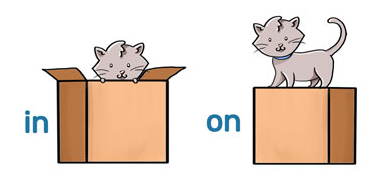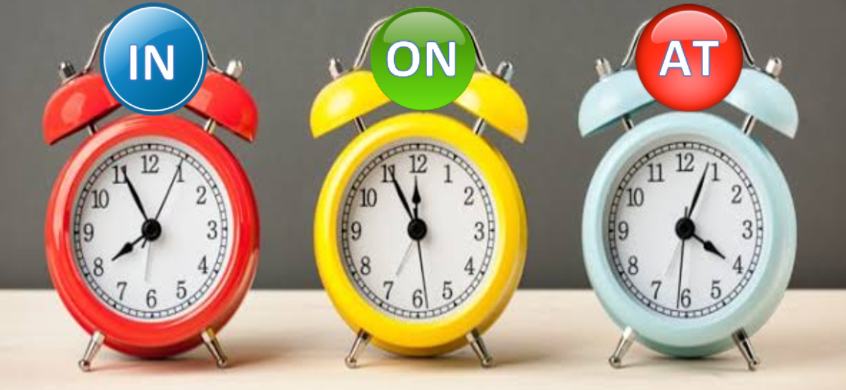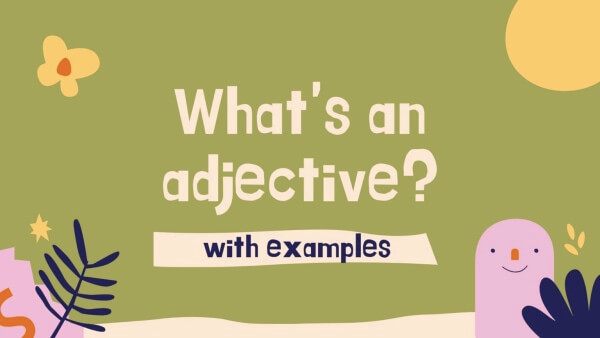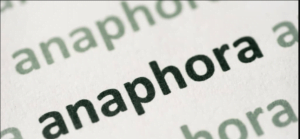A preposition is a word or phrase that comes before a pronoun or noun to indicate a direction, place or location, time or spatial connection. In fact, it is one of the eight parts of speech. In this article, we will look at its definition along with some examples.
What is a Prepositional Phrase?
A prepositional phrase is formed by combining a preposition with a pronoun or a noun, the object of the preposition, as well as any object modifiers.
What are the different Types of Prepositions?
Prepositions are frequently used to describe many sorts of relationships or abstract concepts. However, commonly they convey place, time and direction.
Place prepositions

We can use prepositions to describe the location of something. When we do this, we may describe the item either by itself or by employing spatial relationships.
Common place prepositions: in, at, on
We use in for an enclosed space, at for a particular point and on to refer a surface.
Place preposition examples in a sentence:
- My home is at the corner of this street.
- There are countless butterflies in the garden.
- Andy was scared because he saw a spider on the ceiling.
- I found a chocolate wrapper in my bag this morning.
- She asked Cody to be careful because there was water on the floor.
- She wrote down her phone number on top of my book.
- When will you arrive at the movie theatre?
- Sadie’s mother works in a hospital.
- Although Rudy met his friend at the ice cream parlour, he did not have any ice cream.
- Her husband lived in California when he was a child.
Time prepositions

Prepositions can also be used to express when something occurs.
Common time prepositions include: in, at, on
We use in for the number of days, months, years or other long periods. For a precise time, we use at. For specific dates as well as days, we use on.
Time preposition examples in sentences:
- The beautiful girl asks him to meet her on the roof at sunset.
- Mady had an exam at 3 o’clock.
- She was asked to meet the teacher on Monday along with Percy.
- She began acting in the 1990s, however, she became popular only after 10 years.
- Jack wanted to take his son for lunch on Christmas Day, but he did not have any money.
- My meeting begins at 9 am.
- Her favourite restaurant closes at midnight.
- Is your store open on Sundays?
- My birthday is on 3 November.
- His boss asked him to be at work at 9 o’clock.
Directional prepositions

In addition to the above-mentioned uses, prepositions also indicate the direction in which something moves or travels.
For example:
- Little harry could not reach the cookies kept above the refrigerator.
- My English teacher lives across the street from me.
- Chris was sitting among his friends.
- The children were sitting around a campfire.
- Meet me at the restaurant.
- She parked behind the police station.
- Her mother hung her photo below her brother’s.
- The teacher asked the troublesome student to stand beside him.
- Cindy kept her lenses over the sink.
- The pharmacy is by the movie theatre.
- She asked him to put the package on the table.
- His dog slept under the bed.
What are the rules of prepositions?
- An object is required for a preposition
Every preposition has an object. If a “preposition” lacks an object, it is not a proposition. Instead, it becomes an adverb.
For example:
- The couple is in the living room. Preposition in has the object the living room.
- Please come in. The adverb in has no object. Instead, it qualifies come.
- There was a portal before him. The preposition before has the object him.
- She claims to have never seen it before. The adverb before has no object, but it qualifies seen.
- It must be placed before the object
Pre-position means place before. Hence, the name “preposition” indicates that a preposition (usually) comes before something (its object).
- The pronoun following the preposition is in object form
The noun or pronoun that comes after a preposition is known as a ‘prepositional object’. If it is a pronoun, it should be in the objective form (for example, him, her, me, them), not subjective form (for example, she, I, they).
For example:
This is from my husband and me.
That is between her and her father.
- Preposition forms
Prepositions have no particular form. The majority of prepositions are one-word prepositions but can also be two or three-word phrases. These are known as complex prepositions.
For example:
One-word prepositions include before, on, into etc.
Complex prepositions include according to, in spite of, but for, on account of etc.
- Do not mix up the preposition “to” with the infinitive “to”
Do not confuse the preposition “to” (For example, to Israel, to me) with the infinitive particle “to” (For example, to dance, to sing).
- The golden preposition rule
A preposition is followed by a “noun”. However, it can never be followed by a verb.
What is the difference between particles and prepositions?
Although prepositions and particles appear to be the same, they perform different tasks in a sentence. A particle is a word that depends on another word for its meaning and does not stand on its own. For instance, the word to, when it follows a verb like run, fly or eat, or the word up, when it creates a phrasal verb, such as cheer up.
Hence, it can be difficult to detect whether a word in a sentence is acting as a particle or a preposition. For instance, in the sentence “Despite his injuries, the goaltender played on“, the word on acts as a particle. However, in the sentence, “The children played on the grass, so their feet are dirty”, then the phrase “on the grass” is a prepositional phrase that describes where the children played. Here on is being used as a preposition.
Conclusion
Although limited in number, prepositions are vital components that make up the structure of a sentence as they highlight the link between objects, people and places. Therefore, the right use of prepositions is critical in English. Many students struggle with the correct usage of prepositions in a sentence. When used incorrectly, a preposition can shift the meaning of a statement and in turn generate complications for the speaker. Thus, to make it easier to understand the correct application of this concept, we have listed the various types of prepositions along with some examples in this article.
Share with your friends





